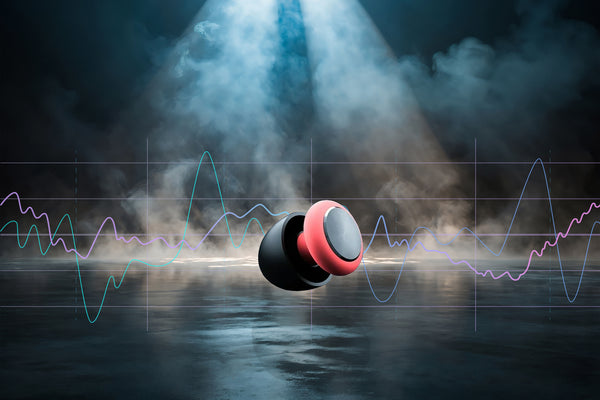The Best Hearing Protection for Drummers: Staying Safe Without Losing the Groove
Drumming is Loud—Your Ears Need Protection
Drummers bring the rhythm and energy to every performance, but few instruments are as punishing on the ears. Whether playing in a small rehearsal space or a massive venue, drummers are exposed to dangerously high decibel levels every time they sit behind the kit.
Unlike other musicians who can step away from the speakers, drummers are in the middle of the action—surrounded by cymbals, snares, and kick drums that can reach peak volumes exceeding safe limits. Without proper hearing protection, long-term exposure can lead to permanent hearing loss and tinnitus, making it harder to perform at your best.
That’s why Spares High Fidelity Earplugs are essential for drummers who want to protect their hearing without losing sound clarity, dynamics, or control over their playing.
How Loud is a Drum Kit? The Numbers Don’t Lie
|
Drumming Scenario |
Average Decibel Level (dB) |
Safe Exposure Limit |
|
Normal conversation |
60 dB |
Unlimited |
|
Acoustic drum kit (practice) |
90-100 dB |
2 hours |
|
Snare drum strikes |
110-120 dB |
10-15 minutes |
|
Cymbal crashes |
115-125 dB |
Immediate risk |
|
Live performance (on stage) |
110-130 dB |
10-15 minutes |
Drummers routinely exceed safe exposure limits, putting them at risk for irreversible damage if they don’t take steps to protect their ears.
The Long-Term Effects of High-Volume Drumming
-
Hearing Loss Creeps Up Over Time – It’s not just one loud gig that does the damage—it’s the cumulative effect of repeated exposure.
-
Tinnitus (Ringing in the Ears) is Permanent – Many drummers develop tinnitus, a constant ringing or buzzing that never goes away.
-
Muffled Sound Perception – Overworked ears can make drums and music sound flat or unbalanced.
- Ear Fatigue & Performance Decline – Straining to hear over loud drums leads to exhaustion and difficulty keeping precise timing.
How Drummers Can Protect Their Hearing Without Losing Sound Quality
-
Use High-Fidelity Earplugs – Unlike foam plugs that block too much sound, high-fidelity earplugs reduce harmful volume while keeping frequencies clear.
-
Take Breaks During Practice – Following the "60/10 rule" (60 minutes playing, 10 minutes of silence) helps the ears recover.
-
Control Monitor & Headphone Levels – Many drummers crank their in-ear monitors or headphone volume too high. Lowering levels prevents further ear strain.
-
Optimize Your Rehearsal Space – Using drum shields, dampening pads, or acoustic treatment helps reduce excessive reflections and loudness.
- Stay Hydrated & Rested – Proper hydration and sleep support inner ear function and recovery.
Protect Your Ears, Keep Your Groove
Drumming shouldn’t come at the cost of your hearing. By taking the right precautions, drummers can continue playing for years without risking their ability to hear the music they love.
Take control of your sound and your health. Grab Your Spares.

